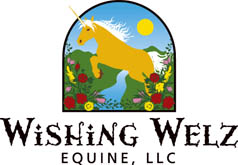Leg Injuries = Stall Rest?
by Dr. Hiltrud Strasser
Far too often, the owner of a horse which has gone lame or has injured its leg
is advised to restrict the horse's movement as far as possible, usually through
box rest. In order to judge whether this is truly appropriate, it is necessary
to familiarize yourself with the circulation and blood vessels of the horse,
and know what takes place in the tissue during the process of healing.
Along the horse's limbs, large blood vessels run parallel to the bones. The
blood "falls" down in the arteries, while in the veins it must "climb"
back up the leg.
What causes the blood to flow upwards over a distance of over three feet? A
40-year-old (i.e. relatively recent) book on hoofcare (Ruthe) states that the
suction of the heart is responsible for this.
Older books on horse care (ex. Spohr) cite the circulation-supporting pumping
action of the hoof as the force returning venial blood into the body.
On account of modern knowledge about the makeup of the corium (capillary sponge)
and the physical processes in the hoof (the hoof mechanism), it has been proven
that a significant, circulation-supporting pumping action takes place inside
the hoof.
When one looks at the natural behavior of the horse (ex. Zeeb) in respect to
amount and duration of movement (free living horses are always in motion, with
short periods of rest lasting minutes or half an hour), it becomes clear that
the circulatory system of the horse can only function properly when the limbs
and hooves are more or less constantly in motion. This means:
1. Horses which don't move for several hours (for example, when they are locked
into a stall at night) have circulatory problems.
2. When the hooves are not "pumping," the blood flow above the hoof
stalls (stocked up legs, "filled" tendons, etc.)
3. Stalled blood cools, so the tissue in the area of the hooves (tissue not
warmed through muscle action) also cools.
4. With lowered temperatures, cell metabolic rates drop sharply.
5. In order for healing to take place, metabolism (blood supply, circulation)
must be increased.
This is not possible when the blood is stalled in the legs because of lack
of movement of the horse.
In other words, to facilitate healing, circulation must be kept high. This
requires constant motion-- but not hard exertion, or high impact from hard ground.
Stall rest and immobilization slows or prevents any healing process.
Copyright Dr. vet. med. H. Strasser
Blaihofstr. 42/1, 72074 Tuebingen, Germany
Tel/Fax: (011) 49-7071-87572
Ed. & Canadian contact: Sabine Kells at email: textorder @ shaw.ca
©2006 by The Horse's Hoof. All rights reserved. No part of
these publications may be reproduced by any means whatsoever without the written
permission of the publisher and/or authors. The information contained within
these articles is intended for educational purposes only, and not for diagnosing
or medicinally prescribing in any way. Readers are cautioned to seek expert
advice from a qualified health professional before pursuing any form of treatment
on their animals. Opinions expressed herein are those of the authors and do
not necessarily reflect those of the publisher.
